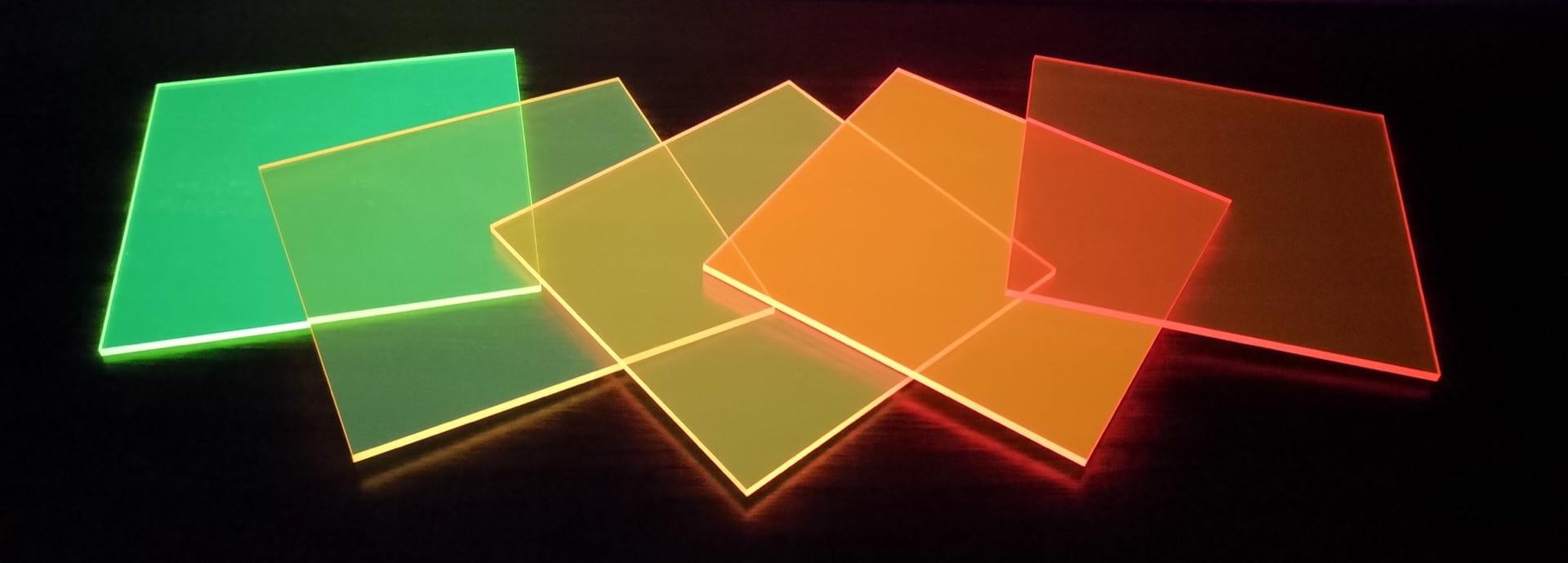Feb 17 2021
Engineers from Rice University have proposed a colorful solution to futuristic energy collection—adding luminescent solar concentrators (LSCs) to windows in buildings.
 Rice University engineers designed and built windowpanes that redirect sunlight or illumination from indoors to edge-band solar cells. The central layer is a conjugated polymer that serves as a waveguide. Image Credit: Yilin Li.
Rice University engineers designed and built windowpanes that redirect sunlight or illumination from indoors to edge-band solar cells. The central layer is a conjugated polymer that serves as a waveguide. Image Credit: Yilin Li.
The team of researchers headed by Rafael Verduzco and postdoctoral researcher and lead author Yilin Li from Rice’s Brown School of Engineering engineered and developed foot square 'windows' in which a conjugated polymer is interspersed between two clear acrylic panels.
The thin middle layer is the secret to success. It has been designed to harness light in a particular wavelength and guide it to the edges of the panel that are lined with solar cells.
Conjugated polymers are chemical compounds that can be tailored with particular physical or chemical properties for a range of applications, such as conductive films or sensors for biomedical devices.
The polymer compound developed at Rice lab is named PNV (for poly[naphthalene-alt-vinylene]) and harnesses and discharges red light. However, tweaking its molecular ingredients should enable it to harness light in a range of colors.
The strategy is that the compound is a waveguide and accepts light from any direction but controls how it leaves, thereby focusing it onto the solar cells that transform it into electricity.
The motivation for this research is to solve energy issues for buildings through integrated photovoltaics. Right now, solar rooftops are the mainstream solution, but you need to orient them toward the sun to maximize their efficiency, and their appearance isn’t very pleasing. We thought, why can’t we make colorful, transparent or translucent solar collectors and apply them to the outside of buildings?
Yilin Li, Study Lead Author and Postdoctoral Researcher, Brown School of Engineering, Rice University
Li started the project as part of a 'smart glass' competition. The research was published in the Polymer International journal.
In fact, the quantity of juice produced by the test units developed by the Rice team is very less compared to that collected by even average commercial solar cells, which usually transform nearly 20% of sunlight into electricity.
However, LSC windows never cease working. They readily convert light from the inner side of the building into electricity when the sun sets. Tests demonstrated that they exhibited more efficiency at converting ambient light from LEDs than from direct sunlight, although the sunlight was 100 times stronger.
“Even indoors, if you hold up a panel, you can see very strong photoluminescence on the edge,” Li noted during the demonstration. The panels tested by him demonstrated a power conversion efficiency of nearly 3.6% under ambient LED light and 2.9% in direct sunlight.
In the past decade, researchers have developed various types of luminophores, but not many with conjugated polymers, stated Verduzco, a professor of chemical and biomolecular engineering and of materials science and nanoengineering.
Part of the problem with using conjugated polymers for this application is that they can be unstable and degrade quickly. But we’ve learned a lot about improving the stability of conjugated polymers in recent years, and in the future, we can engineer the polymers for both stability and desired optical properties.
Rafael Verduzco, Professor of Chemical and Biomolecular Engineering, Materials Science and Nanoengineering, Rice University
The lab also replicated the return of energy from panels measuring up to 120 square inches. According to the researchers, these panels would offer relatively less energy, but they can still be sufficient for a household’s power requirements.
Li added that the polymer may even be tweaked to transform energy from ultraviolet and infrared light, thus enabling the panels to remain transparent.
The polymers can even be printed in patterns in the panels, so they can be turned into artwork.
Yilin Li, Study Lead Author and Postdoctoral Researcher, Brown School of Engineering, Rice University
The co-authors of the study include University of Washington alumnus Yujian Sun; Yongcao Zhang, a graduate assistant at the University of Houston; and Yuxin Li, a graduate assistant at the University of Cincinnati.
This study was supported by Solera City Energy.
Journal Reference:
Li, Y., et al. (2020) High‐performance hybrid luminescent‐scattering solar concentrators based on a luminescent conjugated polymer. Polymer International. doi.org/10.1002/pi.6189.